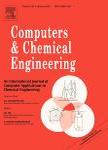版权所有:内蒙古大学图书馆 技术提供:维普资讯• 智图
内蒙古自治区呼和浩特市赛罕区大学西街235号 邮编: 010021

作者机构:Univ Illinois Dept Bioengn Chicago IL 60607 USA Vishwamitra Res Inst Ctr Uncertain Syst Tools Optimizat & Management Clarendon Hills IL 60514 USA
出 版 物:《COMPUTERS & CHEMICAL ENGINEERING》 (计算机与化工)
年 卷 期:2014年第71卷
页 面:708-714页
核心收录:
学科分类:0817[工学-化学工程与技术] 08[工学] 0812[工学-计算机科学与技术(可授工学、理学学位)]
主 题:Infertility Ovulation Normal distribution Maximum principle Non-linear programming
摘 要:In-vitro fertilization (IVF) is one of the highly pursued assisted reproductive technologies (ARTs) worldwide. Superovulation is the most crucial stage in IVF, since it involves injection of hormones externally to stimulate development and maturation of multiple oocytes. A model for the follicular dynamics as a function of injected hormones and patient characteristics has been developed and validated in our previous studies. Using the same model as a predictive tool along with the application of optimal control principles;the optimal dose and frequency of medication customized for each patient is predicted. The objective of successful superovulation is to obtain maximum number of mature oocytes/follicles within a particular size range, which is translated into mathematical form by using concepts from normal distribution. The problem is solved by different optimal control methods like the maximum principle and discretized non-linear programming. The results from both the approaches are compared and their advantages are discussed. (C) 2014 Elsevier Ltd. All rights reserved.